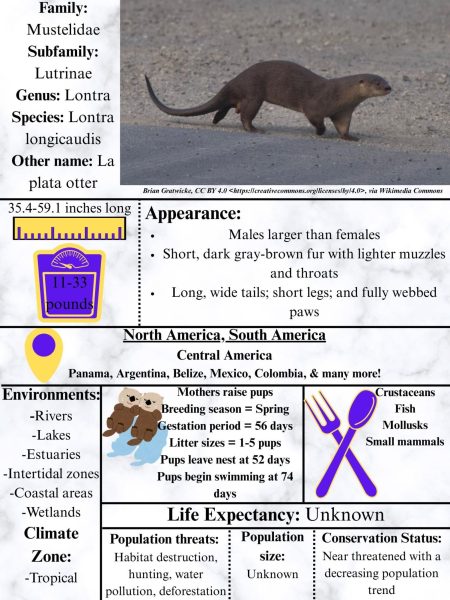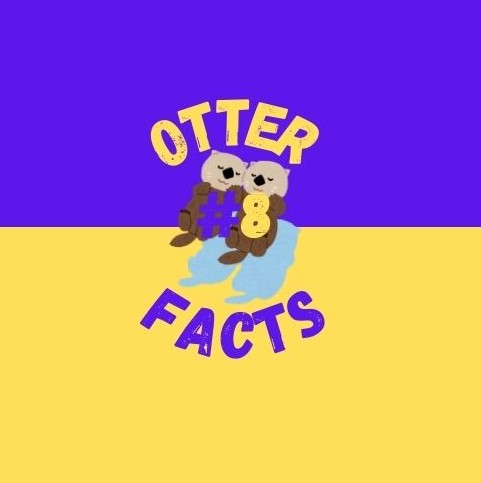Otters. You know why you’re reading about them, right? JVA is the home of the otters; you’re an otter. The picture for the student group in Schoology and the weekly Otter News shows that… and, well, tells that. Our drawn mascot may not have the appearance of real otters–they don’t have abs and can’t stand on just two legs unfortunately–but the spirit is still there. No one can deny that we’re the JVA otters. But what about the real deal? What is the real life animal our mascot is modeled after like? Glad you asked.
As you may remember, there are 13 species of otters. They’re all otters, but there’s still differences between them. What are those differences? Well, let’s take a deeper look at each species to see!
Southern River Otter

Neotropical Otter

An obvious difference between these two species is their genus and scientific name, as well as their appearance. With different species or subspecies differences in color, size, location, family life, and diet can be predicted. However, that is not always the case.
Some similarities include:
- Living in South America
- Having a diet consisting of crustaceans and mollusks
- Having a range covering the same environment types
- Having water pollution as a population threat
Some differences include:
- Size: On average, neotropical otters can get bigger than southern river otters
- Climate zone: Southern river otters live in a temperate climate zone while neotropical otters live in a tropical climate zone
- Conservation status: Southern river otters are endangered while neotropical otters are near threatened.
Clearly these two otter species, living on the same continent, are similar and different in numerous ways. No matter how they live, where they live, or what they eat, southern river otters and neotropical otters are both amazing animals and deserve all the love!


























